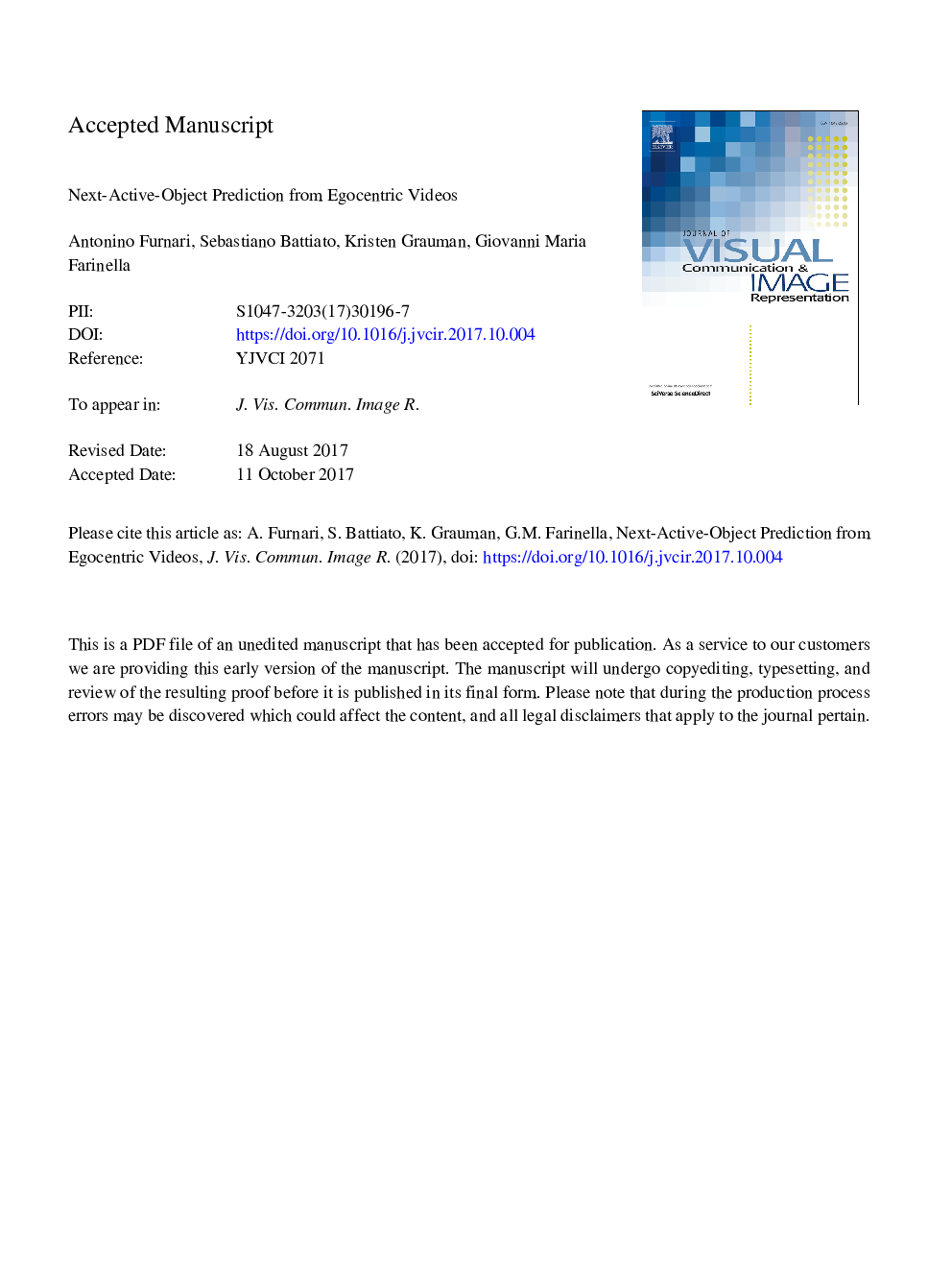| Article ID | Journal | Published Year | Pages | File Type |
|---|---|---|---|---|
| 6938428 | Journal of Visual Communication and Image Representation | 2017 | 38 Pages |
Abstract
Although First Person Vision systems can sense the environment from the user's perspective, they are generally unable to predict his intentions and goals. Since human activities can be decomposed in terms of atomic actions and interactions with objects, intelligent wearable systems would benefit from the ability to anticipate user-object interactions. Even if this task is not trivial, the First Person Vision paradigm can provide important cues to address this challenge. We propose to exploit the dynamics of the scene to recognize next-active-objects before an object interaction begins. We train a classifier to discriminate trajectories leading to an object activation from all others and forecast next-active-objects by analyzing fixed-length trajectory segments within a temporal sliding window. The proposed method compares favorably with respect to several baselines on the Activity of Daily Living (ADL) egocentric dataset comprising 10â¯h of videos acquired by 20 subjects while performing unconstrained interactions with several objects.
Related Topics
Physical Sciences and Engineering
Computer Science
Computer Vision and Pattern Recognition
Authors
Antonino Furnari, Sebastiano Battiato, Kristen Grauman, Giovanni Maria Farinella,
